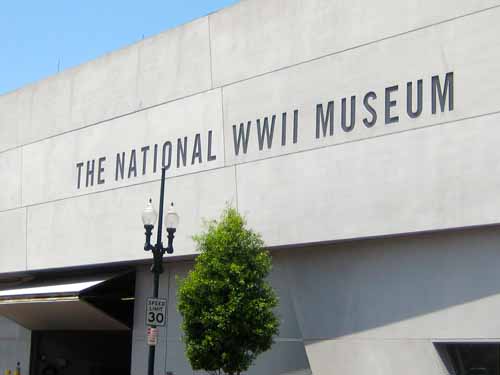
I was in New Orleans on the 70th Anniversary of Victory In Europe Day. I was at the ceremony to mark the occasion at a remarkable place, the World War Two Museum. I had a chance to meet with its President and some senior staff about what is coming next for what they call “New Orleans’ most popular museum, and #4 most popular in the Country!”
But more about the VE Day Memorial in a moment, since I am still writing on Victory Day, due to the quirk of dateline and Soviet insistence. General Alfred Jodl appeared just before dawn at Ike Eisenhower’s Headquarters in Reims, France, to sign the instrument of unconditional surrender to the Allies.
Hitler was dead, a suicide at the Fuhrer Bunker in Berlin. His successor, Gran Admiral Karl Donitz, had hoped to limit the terms of German surrender to only those forces still fighting the Western Allies. But General Dwight Eisenhower demanded complete surrender of all German forces, those fighting in the East as well as in the West. If the Germans provide intransigent, Ike was prepared to seal the front, and force all German surrenders to be to the hated Red Army.
Jodl radioed Donitz with the terms, and Donitz ordered him to sign. So, under the gaze of Russian General Ivan Susloparov and with the signature of French General Francois Sevez, and General Walter Bedell Smith for the Allied Expeditionary Force, Germany had officially thrown in the towel. Ike did not atten, pacing in his office and chain-smoking. Fighting would still go on in the East for almost another day. But the war in the West was over.
Since General Susloparov did not have explicit permission from Soviet Premier Stalin to sign the surrender papers, even as a witness, he was quickly hustled back East-into the hands of the NKVD never to be heard from again. General Jodl, who had been wounded in the assassination attempt on Hitler on July 20, 1944, would be found guilty of war crimes at Nuremburg for crimes against humanity and was hanged in October of 1946.
He was granted a posthumous pardon in 1953, after a German appeals court found him not guilty of breaking international law. It was important to the family, I suppose.
Anyway, prior to becoming a non-person, General Susloparov had no authority to sign for Uncle Joe, even as a witness. Accordingly, the Kremlin decided to call the German instrument of surrender at Reims a “preliminary” act.
The surrender ceremony was repeated in Berlin on 8 May (9 May, Moscow time) and was executed by supreme German military commander Field Marshall Wilhelm Keitel and Marshal of the Soviet Union Georgy Zhukov with minor Allied representatives in attendence.
That is why Russia and most of the former Soviet republics commemorate Victory Day today, and why I am technically accurate in saying I am not writing late about VE Day.
It is still Victory Day.
In Washington yesterday, there was a massed fly-over of the Capital by formations of war-birds amassed in theme formations, starting with P-40 Warhawks with fierce tiger mouths painted on the nose to commemorate the fighters at Pearl Harbor. The Warhawks first flew in 1938. Last in formation, of course, was a B-29 Superfortress, which first flew in 1942. The B-29 signified the Enola Gay and Bockscar Super Forts that ended one era and began another.
Some of them staged out of T.I Martin Field down in Culpeper, so I was torn. But the invitation to attend the Memorial Service at the Boeing Pavilion was too significant to pass up in the Crescent City. That is why I found myself in seersucker suit and bow tie in the front row of white chairs, seated directly under the 500-pound bomb attached to an SBD Dauntless Dive bomber- the very kind that Dad flew in the last days of the War.
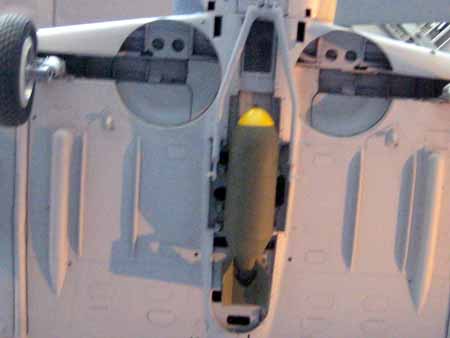
It was a big day at the Museum. Sunny and humid, of course, but temperatures were in the mid-eighties and it was quite a pleasant day. Most of the tourists were in extreme casual attire. I discovered that dressing up is still appreciated in the South, and I got a lot of smiles. I made a note about that, as I made my way around the parked armored vehicles in the permanent collection. It is all quite remarkable.
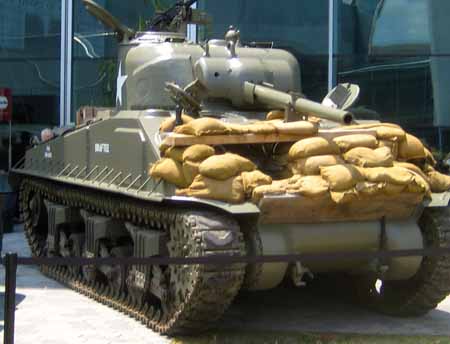
I should give you a little context about the history of why and how the Museum came to exist, and why it is in New Orleans. That requires a little note about Andrew Higgins and his remarkable boat.
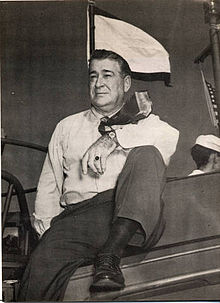
He is not an old-money product of Cajun society, though he might well be one of its most memorable. His father was a Chicago journalist who moved west to Nebraska to raise his family. He died in an accident when Andrew was seven, and the boy knew early on that he was going to have to shift for himself. At one point he was expelled from school for brawling. Despite being ready with his fists, or maybe because of it, he gained a commission in the National Guard, serving in the infantry and engineers.
Exercises on the Platte River got him into thinking about how to move people and equipment in shallow water, and he moved down the river, eventually setting up a lumber import-export business in New Orleans.
As part of the enterprise, he acquired a boatyard and in the mid-1920s began to produce innovative designs with recessed propellers that were highly maneuverable, with a “spoonbill” that enabled them to be beached and backed off the shore with ease and operated nimbly in the flotsam environment of the lower Mississippi.

Higgins called it “the Eureka Boat” and it quickly became the work boat of choice on the river.
He held onto the shipyard when the lumber business died in the Smoot-Hawley tariff Wars that helped usher in the Great Depression, but the shipyard- now Higgins Industries- continued operations. The Coast Guard recognized the utility of the design, and the Marines were interested as well.
Still, there was a problem for military and commercial applications: getting men and machines out of the cargo area of the boat required clambering over the gunwales or getting a crane to lift a vehicle something that was clearly impractical in a combat situation.
That is something that had occurred to the Japanese as well, and their solution to operations at Nanking in 1937 as they invaded China was to install a ramp that could be lowered at the bow of their boats.
American observers in Shanghai reported the development back to the States, and Higgins had a eureka moment. He ordered a prototype mocked up on one of his Eurekas and tested it on Lake Pontchartrain. It worked marvelously, and the modified design was designated the Landing Craft Vehicle Personnel, or LCVT.
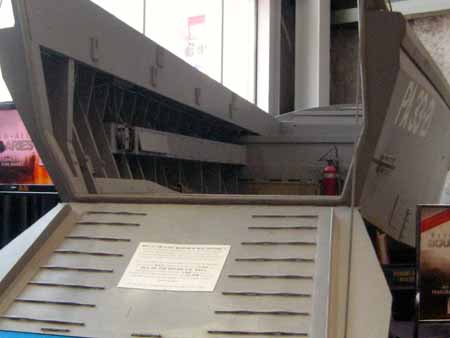
It was more popularly known as “The Higgins Boat,” and it changed history.
Higgins Industries became one of the biggest companies in the world. At its peak, it employed more than 80,000 workers, with total government contracts valued at more than $350 million. Remember, that was when a million bucks meant something.
During World War Two, more than 96% of all Navy hulls were Higgins Boats. Ike Eisenhower said: “Andrew Higgins won the war for us…if Higgins had not designed and built those LCVP’s, we never could have landed over an open beach. The whole strategy of the war would have been different.”
Hitler knew it, too. There are those who memorialize Henry Kaiser and his Liberty Ships as the most innovative ship builder in history. I don’t think that is true. Kaiser industrialized a process that made a signal contribution to the war effort. But what he did was build ships faster than the U-Boats could sink them.
The Higgins Boat were transformative and changed tactics, and made it impossible to stave off a widely distributed assault on places like Gold, Juno, Sword and Omaha Beaches.
Adolf bitterly called Higgins the “New Noah.”
And that is why Stephen Ambrose, an acclaimed popular historian and professor at the University of New Orleans decided that a National Museum devoted to the D-Day invasion could have no better home than the one that produced the Higgins Boat. New Orleans.
Ambrose’s work with D-Day veterans, inspired him to initiate fundraising by donating $500,000of his own money to build “a museum that reflected his deep regard for our nation’s citizen soldiers, the workers on the Home Front and the sacrifices and hardships they endured to achieve victory.”
Along the way, he collected the earnest efforts of his colleague, Dr. Gordon “Nick” Mueller, the support of several significant grants from the Federal Government, the State of Louisiana and show business luminaries like Tom Hanks and Steven Spielberg. In 2003, Congress designated the museum as “America’s National World War II Museum,” and let me tell you, it is something to see.
I will have to tell you about Victory in Europe Day tomorrow, I guess.
Damn, it was cool. But more about that later.
Copyright 2015 Vic Socotra
www.vicsocotra.com
Twitter: @jayare303
